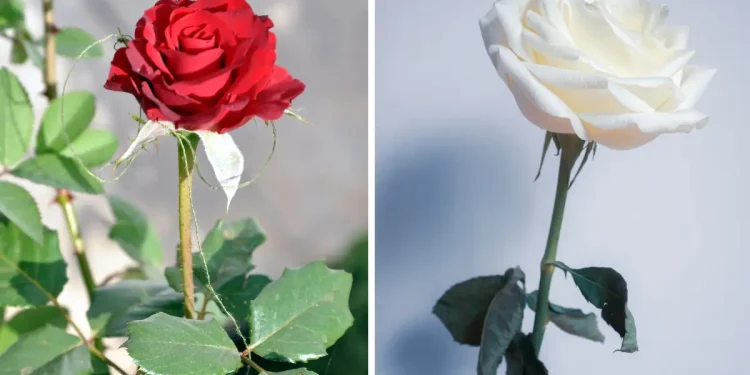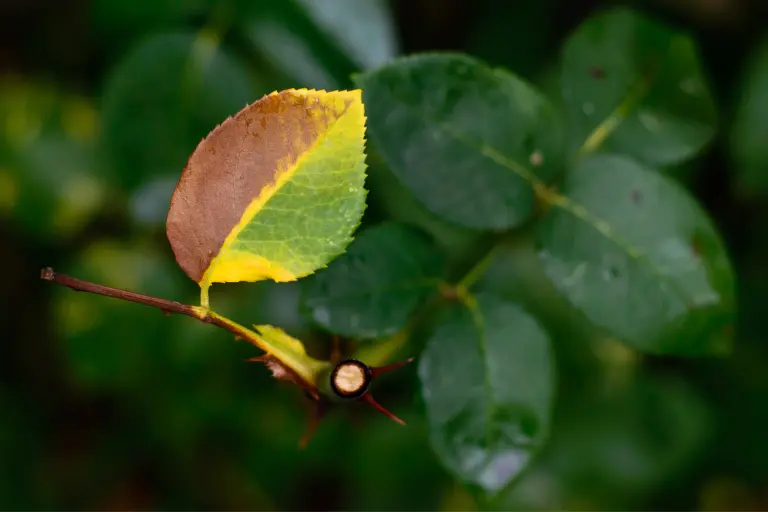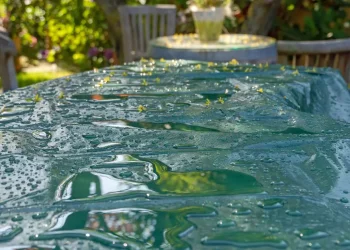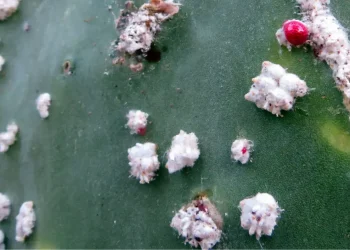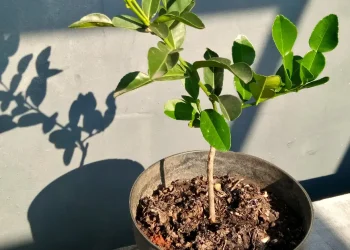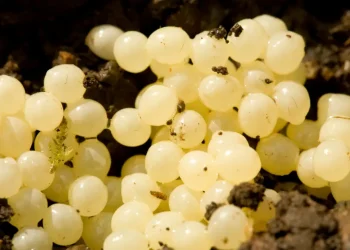Roses are the ultimate symbol of love and passion. You can find them practically everywhere – rose water in your local supermarket, your favorite perfume has roses in it if someone wants to express gratitude, they will give you roses, etc. But everything we usually care about is the flower, not its leaves.
But still, rose leaves are extremely important for the plant’s life. To answer the question right away, no, a rose plant won’t survive for a long time if it loses all its leaves. That may be why the bouquet of roses you received from your lover lasted only a couple of days in that vase.
In this article, I will tell you everything you need to know about rose leaves and why they are so important for the life of your rose plant. So slide on your favorite gardening gloves so you don’t get scratched by the thorns, and let’s dive in.
Can a Rose Plant Survive without Leaves?
Roses, like any other plant, can go without leaves only for a short period of time, but not longer. If the plant loses all its leaves and can’t produce others, it will eventually die.
I bet you’ve ever heard about photosynthesis. Leaves are like little factories where the plant converts sunlight, carbon dioxide, and water into food (glucose) and oxygen. The plant will for sure get some nutrients from the soil through roots, but that will never be enough to keep your roses alive for a longer time.
Leaves are also the place where roses put the most energy. They will use a majority of stored energy to produce new leaves, as the old ones can’t photosynthesize forever. Their lifespan is not so straightforward as with, for instance, Venus Flytrap. Each trap of Venus Flytrap can “eat” only five times; after that, it dies. But we can’t tell for sure for how long will leave on a rose be able to produce oxygen and energy.
So even when your rose plant “just” loses the ability to produce new leaves, it’ll eventually die.
I am sure a picture of a rose bush under mounds of snow lighted up in your mind. But that’s a different scenario. The plant will fill its warehouses with energy before going dormant. After the winter is over, it will use all the stored energy to restore its leaves.
What to do with Roses that Lose all their Leaves?
There are several reasons for leaf drops on roses, with the most common being either too little or too much water.
A Lack of Water or Overwatering
Drought is one of the reasons your roses may drop their leaves. A plant that doesn’t have enough water can’t effectively perform photosynthesis. And no photosynthesis means no energy, which will lead to an overall decline of your roses.
But the opposite can also happen. A plant that is constantly pooling if water will develop root rot, causing the roots to decay and weaken. Additionally, it causes oxygen deprivation, as all that water saturates the soil, leaving just a little room for oxygen to circulate around.
That’s why it’s important to strike a balance. Always aim for a deep soak rather than a shallow splash. It’s a lot better for the plant to water less frequently but with more water than the other way around. Also, keep your gardening hose aimed just at the base of the plant. The leaves don’t need a shower, and it also helps prevent diseases.
Fungal Infection
Not only overwatering can suffocate the roots, but it can help spread fungi, typically black spots, across the whole plant. A wet, warm environment is an ideal condition for rapid spreading, and before you know it, rose leaves will start dropping.
Black spot is the most common fungal disease of roses worldwide. Black spot, as the name suggests, creates distinct dark, circular, or irregular spots on the surface of rose leaves. These spots are usually black or dark brown in color and might remind you of little ink blots on a canvas.
As a black spot progresses, the affected leaves often turn yellow around the spots, creating a striking contrast between the dark centers and the surrounding yellowed areas. This yellowing, also known as chlorosis, is a result of the fungus interfering with the leaf’s ability to produce chlorophyll, which is essential for photosynthesis.
If left unchecked, a black spot can cause the infected leaves to wither, weaken, and eventually drop from the plant. So it’s important to reach for a fungicide as soon as there are any signs of the disease.
Excess Heat
This cause is particularly acute during summer’s hot days.
When the temperature rises, the soil will not only dry out quicker, but the plant will lose more water through a process called transpiration. It’s like their way of sweating it out, trying to cool down. But if the heat becomes too intense, the plant might lose water faster than it can take it up from the soil, leading to dehydration and stress.
To cope with the heatwave, the rose plant goes into survival mode, and one of its strategies is to drop some leaves. By shedding leaves, the plant reduces its surface area and minimizes water loss, a bit like taking off a heavy coat when things get too hot!
Additionally, hot, direct sun can damage the leaves themselves. And that’s irreversible and will lead to browning, wilting, and eventual leaf drop.
Transplant Shock
Transplant shock occurs when a plant is moved from one spot to another, disrupting its established root system and equilibrium. As a result, the plant can’t efficiently absorb water and nutrients, leading to stress and water imbalance.
In response to this upheaval, the plant might decide to drop some of its leaves. As leaves take the most energy to keep alive, your rose plant will shed them to conserve its energy and focus on re-establishing roots.
But transplant shock is usually temporary. Make sure to water them regularly, provide some shade during the hottest parts of the day, and maybe even pamper them with a bit of root-stimulating fertilizer to speed up their recovery.
How to Maintain your Roses Healthy
First and foremost, it all starts with good soil. Roses are deep-rooted plants that do best in rich, loamy soil that won’t drain all the water instantly out. Adding a layer of organic mulch around your roses will help with that. Mulch helps retain moisture, suppress weeds, and regulate soil temperature.
The second very important thing is location. Plant your roses in a spot that gets at least six hours of sunlight daily, and ensure good air circulation to keep them breathing easy. Proper spacing between plants can also prevent overcrowding and minimize the risk of disease.
Water your roses deeply and regularly, especially during drought. Avoid overhead watering, as wet foliage can invite disease like an unwanted guest.
Using fertilizer is not always needed but welcomed, especially during their growing season. Organic options or slow-release fertilizers work wonders, providing a steady supply of nutrients to keep those blooms coming.
Don’t forget to regularly trim away dead or diseased wood, and don’t be shy about shaping them to encourage healthy growth and better air circulation. You should place the pruning time in late winter or early spring before new growth starts. When pruning, make your cuts at a 45-degree angle, about ¼ inch (0.6 cm) above an outward-facing bud. This encourages new growth to grow outward rather than inward, preventing a tangled mess in the center of the plant. Depending on the type of rose and your preferences, you can adjust the height of the plant by cutting the main stems to your desired height.
Lastly, keep a close eye on your roses for any signs of pests or diseases. At first sight of trouble, take action with natural remedies or targeted treatments to protect your precious plants.
Bottom Line
Roses are resilient plants that you can find growing all around the world in many different places. You can find roses climbing up long walls, growing in tight containers, or completely widely near a field.
But once they come under stress, they often drop leaves. As long as you step on time, it can be just a temporary issue. But the problem is that these issues can chain rapidly.
You should always ensure that you are giving your roses everything they need. Proper watering, providing adequate sunlight and air circulation, and timely removal of dead and diseased wood are crucial for their well-being.

